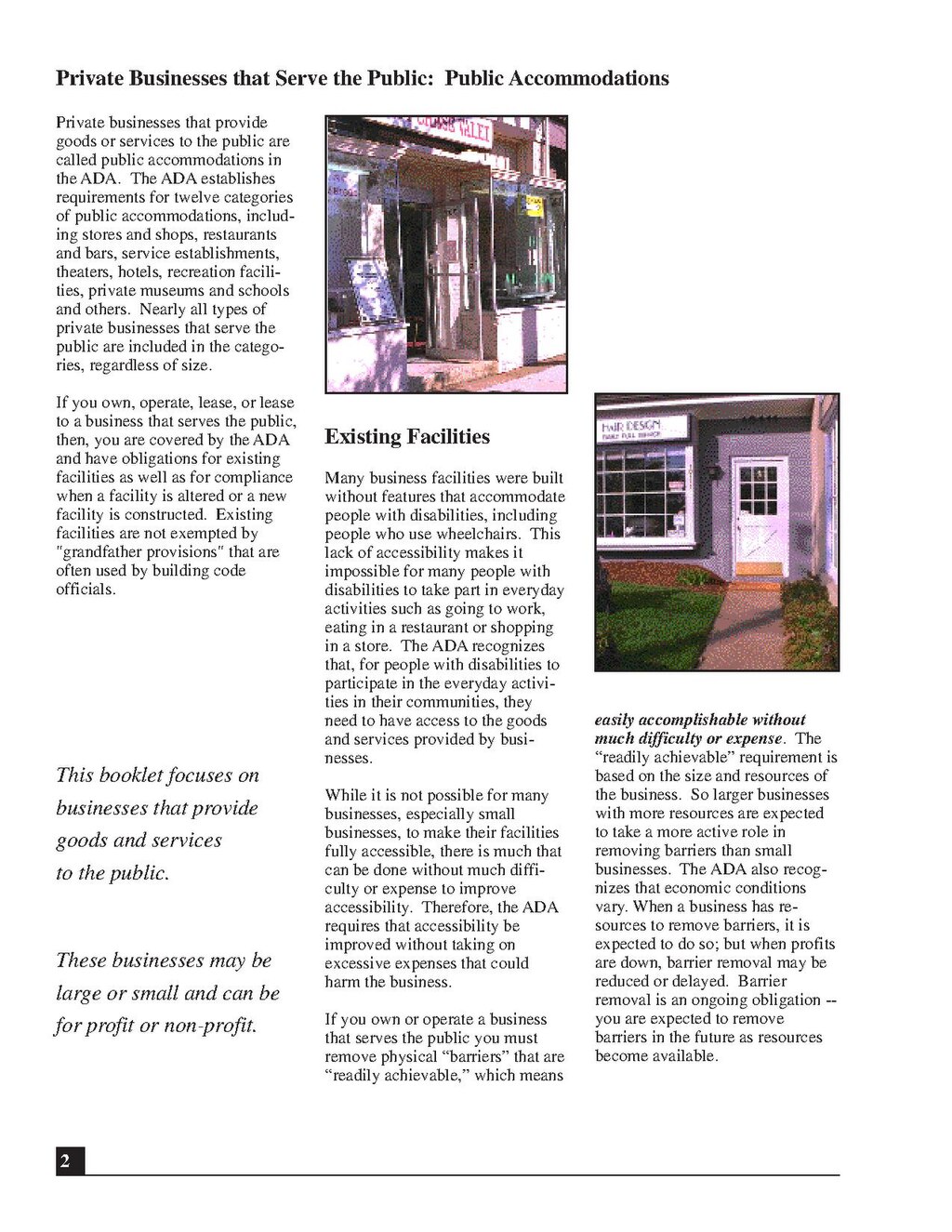Private Businesses that Serve the Public: Public Accommodations
Private businesses that provide goods or services to the public are called public accommodations in the ADA. The ADA establishes requirements for twelve categories of public accommodations, including stores and shops, restaurants and bars, service establishments, theaters, hotels, recreation facilities, private museums and schools and others. Nearly all types of private businesses that serve the public are included in the categories, regardless of size.
If you own, operate, lease, or lease to a business that serves the public, then, you are covered by the ADA and have obligations for existing facilities as well as for compliance when a facility is altered or a new facility is constructed. Existing facilities are not exempted by "grandfather provisions" that are often used by building code officials.
An image should appear at this position in the text. To use the entire page scan as a placeholder, edit this page and replace "{{missing image}}" with "{{raw image|ADA Guide for Small Businesses (1999).pdf/6}}". Otherwise, if you are able to provide the image then please do so. For guidance, see Wikisource:Image guidelines and Help:Adding images. |
Existing Facilities
Many business facilities were built without features that accommodate people with disabilities, including people who use wheelchairs. This lack of accessibility makes it impossible for many people with disabilities to take part in everyday activities such as going to work, eating in a restaurant or shopping in a store. The ADA recognizes that, for people with disabilities to participate in the everyday activities in their communities, they need to have access to the goods and services provided by businesses.
This booklet focuses on businesses that provide goods and services to the public.While it is not possible for many businesses, especially small businesses, to make their facilities fully accessible, there is much that can be done without much difficulty or expense to improve accessibility. Therefore, the ADA requires that accessibility be improved without taking on excessive expenses that could harm the business.
An image should appear at this position in the text. To use the entire page scan as a placeholder, edit this page and replace "{{missing image}}" with "{{raw image|ADA Guide for Small Businesses (1999).pdf/6}}". Otherwise, if you are able to provide the image then please do so. For guidance, see Wikisource:Image guidelines and Help:Adding images. |
These businesses may be large or small and can be for profit or non-profit.If you own or operate a business that serves the public you must remove physical “barriers” that are “readily achievable,” which means easily accomplishable without much difficulty or expense. The “readily achievable” requirement is based on the size and resources of the business. So larger businesses with more resources are expected to take a more active role in removing barriers than small businesses. The ADA also recognizes that economic conditions vary. When a business has resources to remove barriers, it is expected to do so; but when profits are down, barrier removal may be reduced or delayed. Barrier removal is an ongoing obligation—you are expected to remove barriers in the future as resources become available.
2
